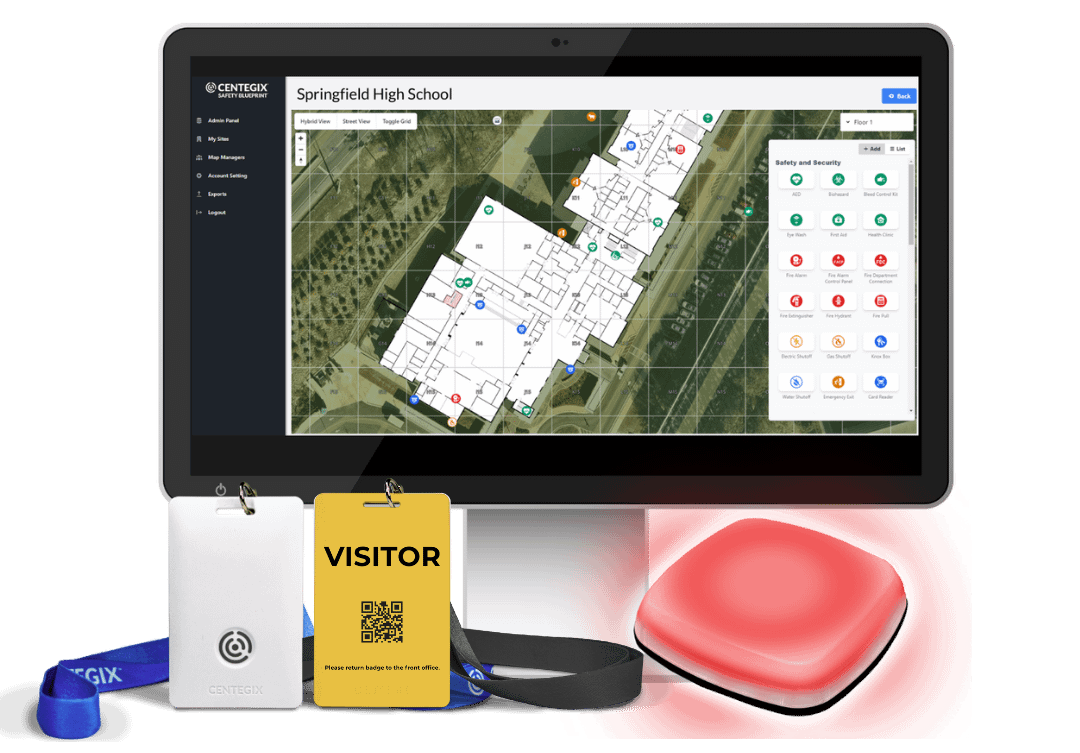Workplace violence is an unfortunate reality for emergency room personnel across the United States. According to the American College of Emergency Physicians (ACEP), nearly half of emergency physicians have experienced violence in the Emergency Department (ED) and 80 percent of emergency physicians said that violence in the ED was harming patient care. Though everyone understands that ED work is unpredictable by nature, everyone present during a violent incident, including physicians, staff, patients, and visitors, is negatively affected. Therefore hospitals and advocacy groups are seeking solutions that improve ED safety records and ensure the well-being of hospital staff. Hospital safety plans that include wearable emergency buttons are one way that hospitals can prevent workplace violence in healthcare and respond to ACEP’s exhortation that hospital leadership “take action to mitigate or resolve workplace violence safety and security risks.”
Rates of Violence in Emergency Departments Are Increasing
Incidents of violence in emergency rooms are on the rise. A 2022 ACEP survey found that 85% of emergency physicians believe the rate of violence experienced in emergency departments has increased over the past five years. This increase means difficult days and nights on the job for hospital personnel. According to Cleveland Clinic CEO Tom Mihaljevic, “daily—literally daily—we’re exposed to violent outbursts, particularly in our emergency rooms.” In the healthcare setting, workplace violence includes the following:
- verbal, nonverbal, written, or physical aggression
- threatening, intimidating, harassing, or humiliating words or actions
- bullying
- sabotage
- sexual harassment
- physical assaults
- other behaviors of concern involving staff, licensed practitioners, patients, or visitors
These behaviors are clearly harmful to the hospital staff, and the consequences of workplace violence interfere with providers’ ability to do their jobs effectively. According to the hospital safety advocacy group Stop ED Violence, “violence in the emergency department not only harms health care professionals who are committed to helping others, but it interferes with the delivery of high-quality patient care.”
Workplace violence in healthcare is vastly underreported. Despite the uptick in violent incidents, less than 25 percent of ED workplace violence incidents get reported. The reasons for not reporting violent incidents range from a lack of a uniform definition of workplace violence to employees’ belief that reporting isn’t worthwhile to an assumption that violence is an expected part of the job. Stop ED Violence encourages staff to report workplace violence. The group launched the “No Silence on ED Violence” campaign in response to what it sees as an unconscionable and unacceptable frequency of violent attacks on nurses, physicians, and patients in our nation’s EDs. They argue that violence committed against healthcare professionals in the emergency department must no longer be tolerated as “part of the job.”
Ending Workplace Violence with a Hospital Safety Plan

Workplace violence in healthcare
While many factors have combined to result in increased violence in EDs, healthcare experts agree that the sharp increase in emergency room visits plays a major role. When patients lack access to healthcare in other settings, the ED becomes a safety net where people seek primary care, social services, and even food. This increase in demand for treatment in EDs leads to frustration with the healthcare system, which can manifest as workplace violence. A variety of risk factors can contribute to workplace violence in EDs. These risk factors occupy three categories:
- Patient risk factors include a history of drug and alcohol abuse, history of violence, psychiatric illnesses, gang membership, access to firearms, and lower socioeconomic status.
- Environmental risk factors include long wait times, overcrowding, understaffing, unrestricted movement of the public, inadequate emergency communication, and poor workplace design.
- Organizational risk factors involve inadequate security, lack of staff training, and failure to prevent and manage healthcare facility violence.
A workplace safety plan that accounts for as many of these risk factors as possible contributes to the safety of hospital personnel. A hospital safety plan that includes wearable security badges gives hospital staff immediate communication with support personnel when patient risk factors increase the likelihood of a violent incident. The use of personal security badges minimizes environmental and organizational risk factors by providing an inconspicuous way to initiate safety protocols around violent patients.
Discreet De-escalation of Violent Incidents
An effective hospital safety plan incorporates measures that de-escalate incidents before they turn violent. According to the American Association of Medical Colleges (AAMC), de-escalation training can play a key role in preventing workplace violence in healthcare. This training helps healthcare providers to notice things they say or do that might be inflammatory, thereby exacerbating the problem rather than solving it. One action that can trigger some patients and patrons to become violent is a department-wide emergency alert. Particularly when these alerts include intercom calls that are audible throughout the ED, they can turn a tense situation into a violent one. These types of alerts can also give the impression to others in the ED that hospital staff does not have control of a situation. This can trigger stress responses in other patients and visitors. In addition, providers who are obligated to leave the room or use an intercom system for help must divert their attention from patient care in these incidents.
Clearly, ED-wide alerts and safety plans that obligate hospital staff to summon help from another location are not ideal solutions to daily incidents of workplace violence in healthcare. Hospital safety plans that include wearable security badges prevent many of the problems associated with these methods. With access to a wearable security badge, healthcare providers and other staff are able to call for help in a way that does not trigger hospital patrons to react violently. Rather, other employees can respond without a staff member being obligated to alert the entire ED about a patient’s or patron’s behavior. This makes employees better able to continue providing care to patients.
Hospital Safety Plans with CrisisAlert Wearable Emergency Badge Increases Staff Safety

Workplace violence in healthcare
Healthcare safety plans that have the speed, ease, and discretion with which hospital staff can initiate a safety alert affects the outcome of incidents of workplace violence in healthcare. The CENTEGIX CrisisAlert wearable emergency button ensures that hospital staff can discreetly and quickly call for help and responders can quickly and reliably initiate appropriate actions to keep staff members safe. The CrisisAlert badge is:
- Fast. Healthcare providers can alert an administrator more efficiently than by intercom or mobile phone.
- Discreet. The badge is worn inconspicuously with a provider’s hospital ID badge.
- Accessible. Hospital employees have unrestricted and immediate capability to alert an administrator in an emergency.
- Mobile. Employees can alert an administrator from anywhere on hospital property.
- Reliable
Hospital administrators and policymakers can increase ED safety by implementing a hospital safety plan that includes the CENTEGIX CrisisAlert wearable security solution. CrisisAlert can be installed without alterations to a hospital’s physical structure or electrical wiring, and installation can be completed with minimal disruption to patient care. CrisisAlert is a key element of any workplace safety plan that seeks to respond effectively to instances of violence in emergency rooms.
CENTEGIX is the leader in incident response solutions. Our CrisisAlert platform is the fastest and easiest way for staff to call for help in any emergency, from the everyday to the extreme. CENTEGIX promotes safer spaces by innovating technology to empower and protect people, and leaders nationwide trust our safety solutions to provide peace of mind. To learn more about CENTEGIX, visit www.centegix.com.










